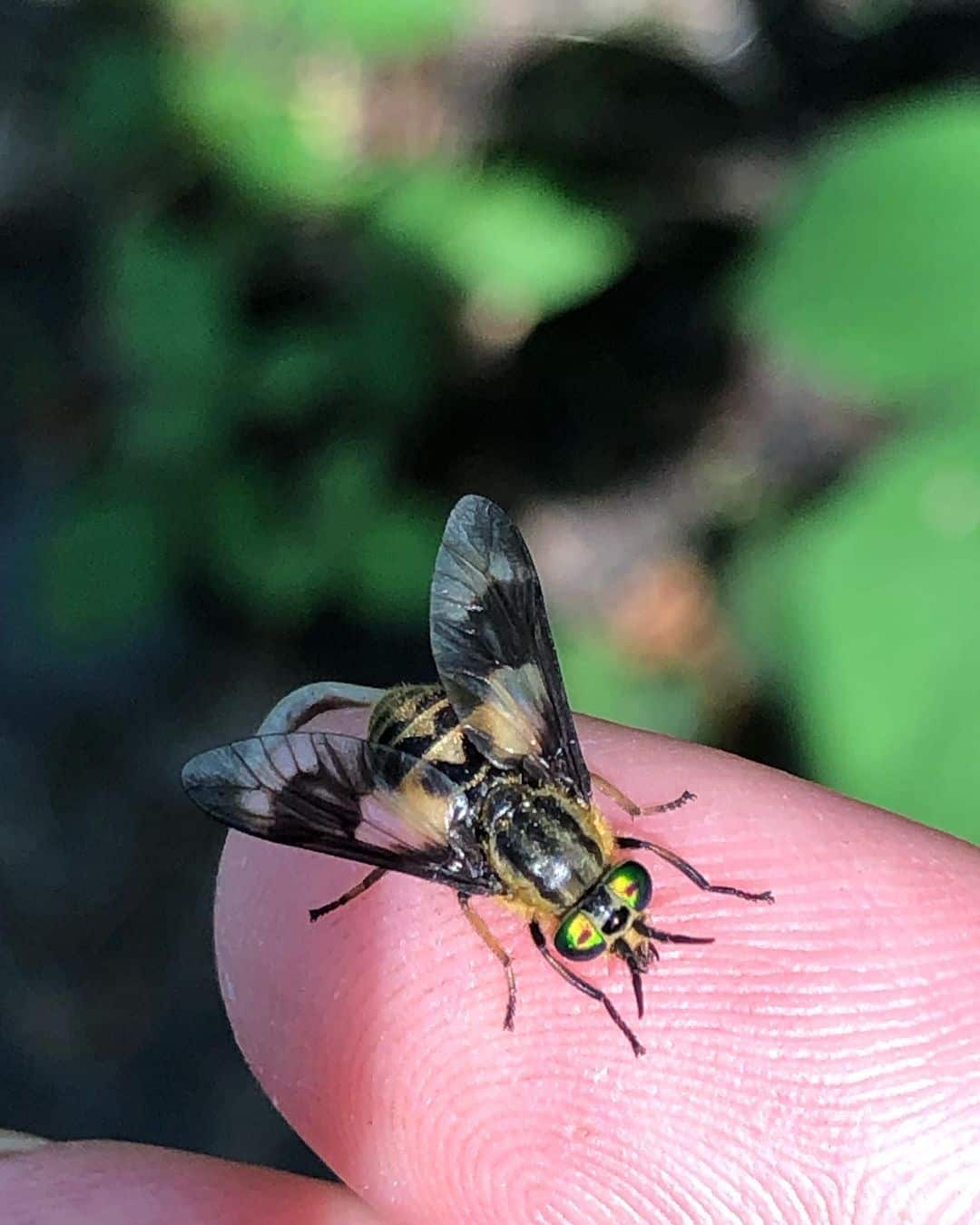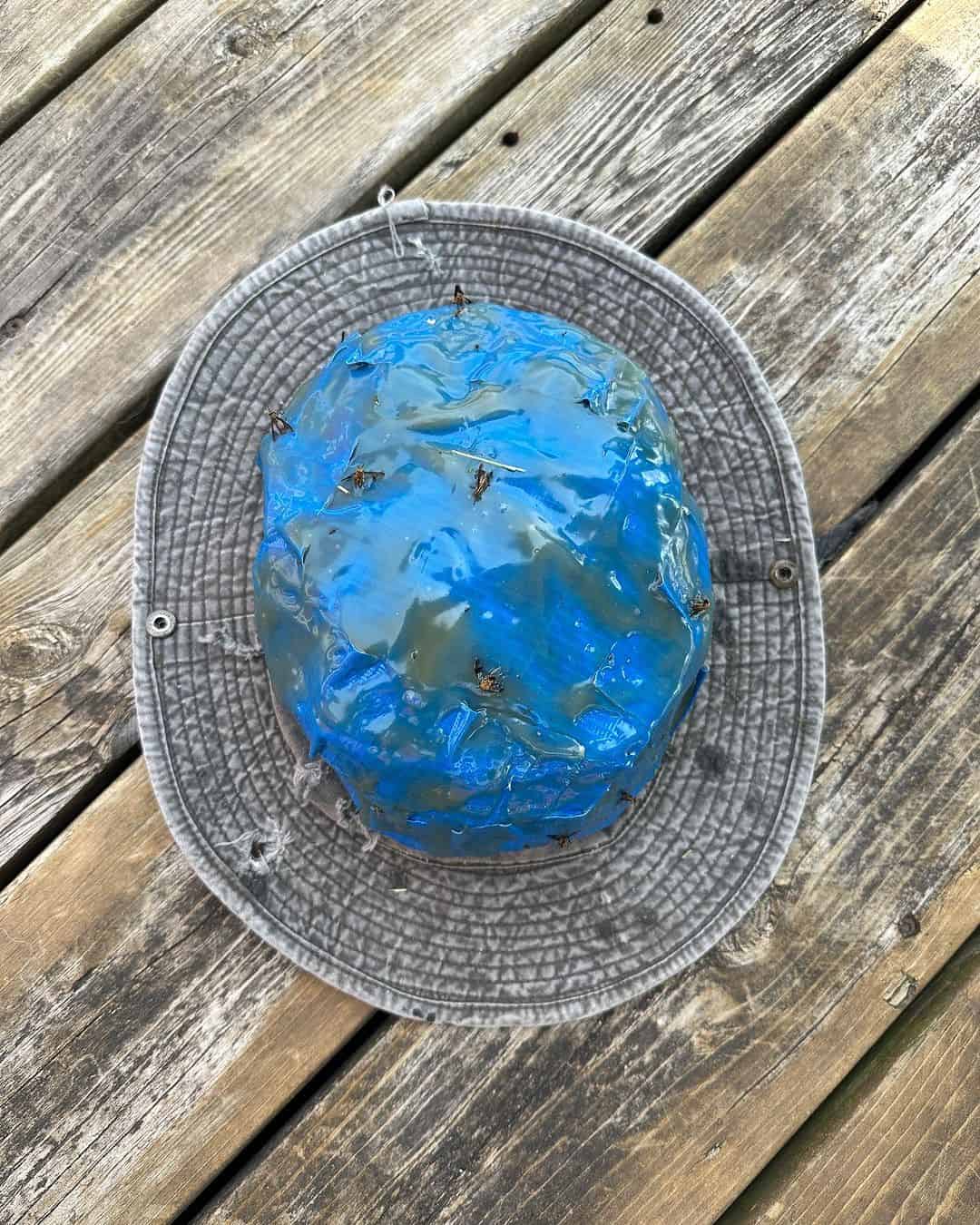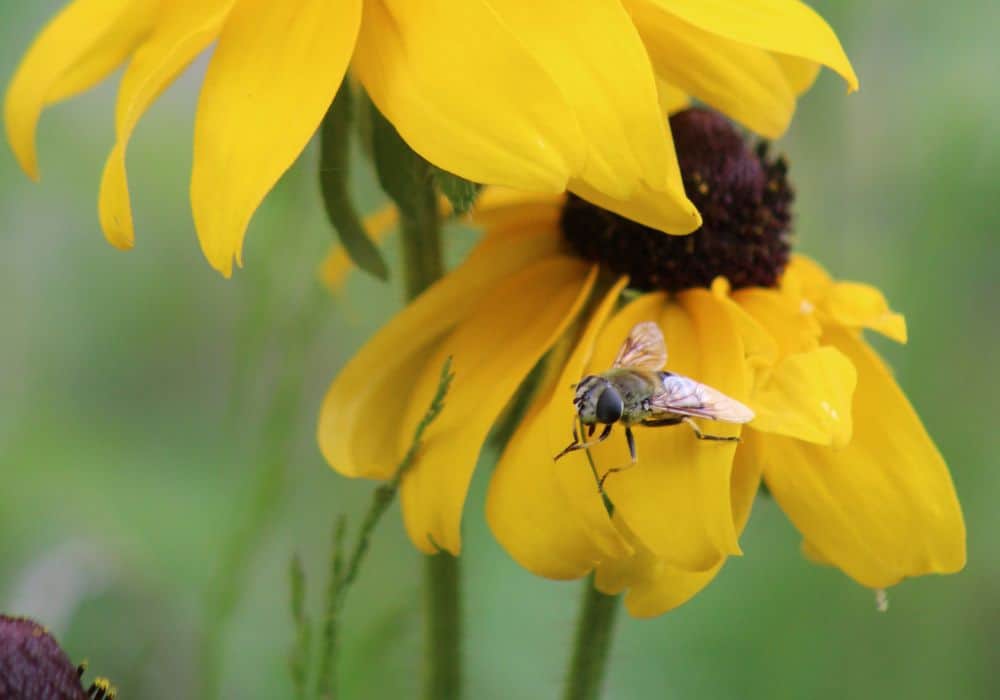Deer flies are a unique species of flies that are larger than house flies, smaller than horse flies, and every bit as annoying. They often come out on warm, sunny days and feed on blood from mammals like humans, cattle, horses, and dogs.
If a deer fly has bitten you, do not panic as most deer fly bites are harmless and will only trigger allergic reactions that will go away with the right treatment. A simple deer fly bite treatment involves thoroughly cleaning the bite area with antibacterial soap.
If you experience any swelling, use ice packs to keep it down, and follow through with calamine lotion or any over-the-counter lotion that will regulate itchiness and rashes. Lastly, use antihistamines like Benadryl to regulate allergic reactions.
For the remainder of this article, we’ll explain how to identify deer flies, ways to avoid getting bitten and remedy their bites. We’ll also discuss some symptoms that follow their bites.
How to Identify a Deer Fly if You Get Bitten?
Among deer flies, the bite from a female deer fly is the most painful and it often results in swelling and redness. Some people have even described the sensation as similar to a bee’s sting. Male deer flies on the other hand rarely bite because they feed on pollen, not blood.
So, how do these females bite?
Female deer flies bite by piercing the skin of the prey with their razor-sharp mouthparts. Once blood begins to flow, they suck it up and repeat the cycle.
It is also important to know that if you get bitten by a male deer fly, you probably won’t feel as much pain because, unlike their female counterparts, their mouth parts are designed for feeding on nectar and pollen.
There are a couple of ways to manage deer fly bites, but before we discuss them, let’s look at how to identify deer flies. You must be sure of the type of insect that bit you to ensure you use the appropriate treatments.
What Do Deer Flies Look Like?
A typical adult deer fly is significantly larger than a house fly and can be as long as 1.25 inches. These fly species have small, rounded heads with huge eyes that could be either green or gold. Their wings are mostly clear, with distinctive brightly colored bands or dark bands across them.
In addition to this, deer flies have long antennae that often grow past the length of their heads, with noticeable mouth parts that grow outwards, away from their head. Their bodies could be gray or light brown, and some deer fly species have yellow and black stripes.
Where Are Deer Flies Often Found?
Deer Flies are mostly active during the daytime in the spring or summer. After laying eggs, their larvae pupate in the mud along the banks of ponds, streams, marshes, thick vegetation, or wetlands. Once they complete their life cycle and are fully grown, deer flies are often found in damp ecosystems near wooded areas and wetlands.
If it’s late summer and you’re in an environment with bodies of water nearby or trees that provide good shade in a damp area, you will likely come across pesky insects like deer flies.
What Are The Symptoms Of A Deer Fly Bite?

Image Credit: reddragonfly_mcr
A bite from a female deer fly will hardly go unnoticed, this is due to how painful they are. Besides being likened to a bee’s sting, they have also been described as “skin lashing” sensations. So, if a deer fly bites you, here are some symptoms you can expect;
1. Localized Symptoms
At the bite site, some of the most noticeable symptoms will include red welts or swelling. This might also appear as red bumps on your skin that can be painful or sensitive to touch.
Deer flies only make small incisions in your skin to produce blood. Therefore, you may bleed a little, but the wound should be small and will clot within a short period.
2. Itching
Besides the swelling and redness, the area attacked by a deer fly will often be itchy. Experts advise that you try not to scratch the bite site as this will only worsen the wound and may lead to secondary infections.
3. Allergic Reactions
When deer flies bite, they secrete saliva as they consume the blood pool formed from the bite. As they feed, they inject some saliva into their prey. This saliva contains anticoagulant compounds, which can trigger allergic reactions depending on the prey’s physiology.
These allergic reactions include swelling around the eyes, lips, or general face area. You may also develop rashes around the bite site and experience dizziness, wheezing, or weakness in extreme cases.
N.B: Deer fly bites are not fatal; these symptoms should go away with proper management.
However, although deer flies do not transmit dangerous diseases, WebMD cites that a certain variety of deer flies found in the western part of the United States may transmit a condition known as Tularemia. This condition is also sometimes called deer fly fever or rabbit fever.
Tularemia can be treated with antibiotics but can become fatal if left unattended. If your symptoms worsen, do not hesitate to seek medical attention. Here are some additional symptoms that may indicate an infection;
- Shortness of breath
- Skin ulcers
- High fever
- Headaches
- Turning blue
- Extreme fatigue
- Nausea
How to Treat a Deer Fly Bite?

Image Credit: jellyby_farm
If it’s late afternoon and you’re enjoying a cool summer breeze outside and you feel the unmistakable bite of a pesky little deer fly, here is a simple treatment plan you can use to manage the pain and make sure it doesn’t get any worse;
Step 1: Move To A Safer Area
Deer flies are intermittent feeders, meaning if you remain in the same area where you got bitten, there is a high chance that they will seek you out and try to bite you again. To avoid dealing with multiple bites, remove yourself from that area and find somewhere safer to sit.
Step 2: Clean The Bite Site
Deer flies often touch garbage, decomposing materials, and other nasty things that carry bacteria. To avoid getting the wound infected, clean the bite site by washing it thoroughly with antibacterial soap and warm water.
Step 3: Apply A Soothing Lotion
Once the area is dry, apply calamine lotion or hydrocortisone cream to reduce the level of itchiness you may feel. If you don’t have access to the lotions mentioned above, you can also make a soothing baking soda paste by mixing a few tablespoons with water and applying it to the affected area.
Step 4: Ice The Affected Area
If you experience swelling, use ice packs to ease the discomfort and reduce the swelling. You can also apply a cool, damp washcloth over the swollen area to keep it down. Another way to reduce the swelling is by keeping the affected area elevated from the rest of your body, especially if you were bitten on your legs or arms.
Step 5: Use Anti-allergy Medication
Besides the calming lotion, you can take over-the-counter anti-itch medicine or antihistamines to reduce the itchiness. If the pain worsens, you can also use pain relievers if necessary.
Step 6:Use An Oatmeal Bath
Some sources advise running an oatmeal bath if the itchiness does not reduce after using anti-allergy creams and medication. It helps to reduce the discomfort in the affected area.
Oatmeal also has anti-inflammatory and antioxidant properties that can bring relief after a deer fly bite. Here’s a simple oatmeal bath recipe you can follow;
Ingredients
- Colloidal oatmeal or uncooked whole oats
- Two cups of water
Directions
- If you have uncooked whole oats, you can make colloidal oatmeal by using a food processor to blend half cup of whole oats into an even powder and adding it to two cups of water to make a liquid with a milky consistency.
- Run a lukewarm bath and add colloidal oats to the bathtub.
- Soak in the tub for about ten to 15 minutes. Be careful not to sit longer, as it can dry out your skin.
- Pat dry and apply calamine lotion to the affected site.
- If you don’t want to use a bathtub, spot-treat the wounded area by preparing an oatmeal solution with colloidal oatmeal and warm water in a bowl.
- Use a sponge to apply this solution to the bite area and follow through with calamine lotion.
The symptoms of a deer fly bite should dissipate within a few days. However, if you develop worsening symptoms, you may have developed an infection or other health complications. Hence, you should visit a doctor and get proper treatment.
How Can I Keep Deer Flies Away?
One deer fly bite is enough to make you dislike the little insects. To avoid dealing with more deer fly bites in the future, here are some precautions you can take;
- Stay Covered: Deer flies only attack when your skin is exposed. If you are outside on a sunny day, protect yourself by covering exposed skin and wearing a hat.
- Use Insect Repellent: If the weather is too warm to wear long clothing, spray your skin with insect repellent, and it will keep deer flies from biting you.
- Avoid Wooded Areas: As mentioned, damp, wooded areas attract deer flies. Avoid these areas or wear protective clothing near such environments if you can.
Conclusion
Deer fly bites are painful and can cause several reactions, including swelling, itchiness, redness, and general discomfort. To treat the affected site, wash thoroughly with warm water and antibacterial soap and follow through with calamine lotion.
You can also use anti-itch medicine, oatmeal baths, and over-the-counter medication to reduce your symptoms. If you feel worse after a couple of days or experience nausea, headaches, or a high fever, seek medical attention, as it might indicate an infection.
